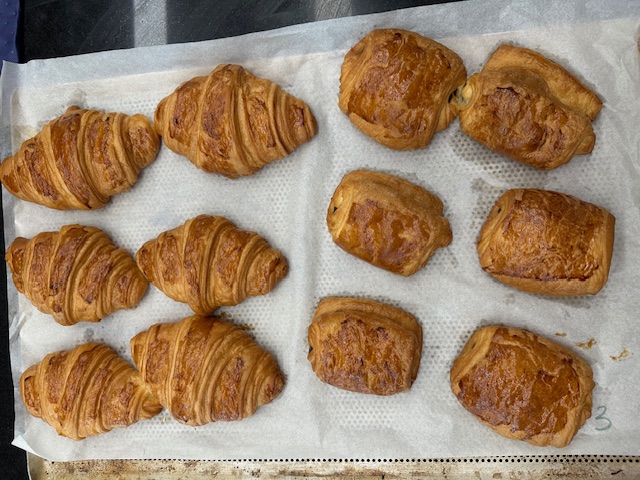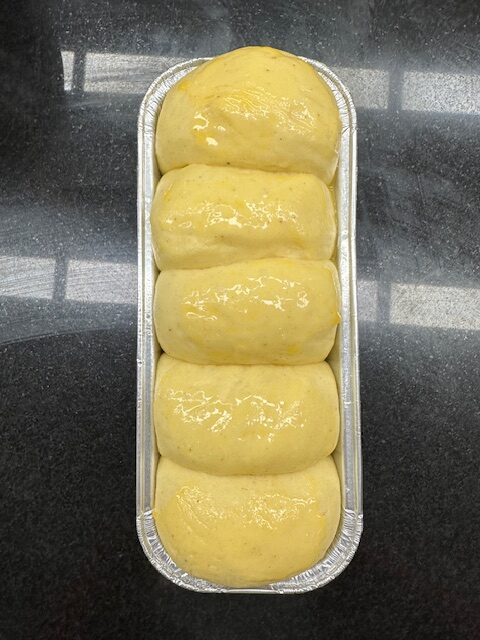Julian gave me a croissant and brioche class at Le Cordon Bleu for Christmas. Actually, I think it was more a gift for him, expecting me to bake these items on a regular basis. I had to rest my knees for a couple of days so I could participate in the class.
We took the Métro subway to a stop near the campus. The school is not housed in the same place where Julia Child took classes. The campus is southwest of the Eiffel Tower. The building resembles an oversized pizza box with picture windows overlooking the Seine. The first floor has a café, one large classroom, and a small store. We had lunch at the café while waiting for my class to start.
The class was conducted in French and English. Most of the students were American, Canadian, or British, with some French and Asian people mixed in. The doughs were pre-made. The first thing the instructor did was to demonstrate the lamination method of enrobing the butter in dough, then folding it. Temperature is critical at this step, because you don’t want the butter to leak out. We refrigerated the dough, then repeated the process. At this stage, the instructor took our doughs and ran it through a glorified pasta maker to get it to the right thickness. Thereafter, we shaped six croissants and six pains au chocolats. These rose while we shaped six brioche rolls and one brioche loaf.

The finished croissants and pains au chocolats.

Brioche loaf prior to baking.
I was surprised by several features of the school. The instructor, translator, and teaching assistants were all friendly and helpful to those of us who aren’t professionals. All of the stoves were induction, not gas. I asked the translator about this during a break and she said it was for safety reasons. There was probably an environmental reason as well, given gas fumes and the prospect of having ten stovetops going full blast in a classroom during the summer. The instructor also confessed that most bakeries in France do not do the croissant preparation themselves (quelle horreur!). The café on the first floor was reasonably priced. Tuition for a full culinary education is $69,000, so it helps that students can afford to eat there.
Meanwhile, Julian peeked in on a class on the first floor before walking back to Île St. Louis. The lesson of the day was foie gras (fatty goose liver) with a fig sauce. Each student received a whole foie gras and had to dissect out the arteries before cooking. Julian’s comment: “Some were better than others.” It pays to take anatomy; otherwise, you could wind up with a true crise de foie (crisis of the liver – foie gras is very expensive).
At the end of the workshop, we got to take home our recipe booklet, a Cordon Bleu apron, insulated bag, pencil, and our creations. We also had a “graduation ceremony”, where students received their certificates of completion to show their family and friends. I only took back to our apartment the brioche loaf, two brioche rolls, and two each of the croissants and pains au chocolats. The rest found good homes with full-time students and staff. The brioche loaf was sturdy enough to travel to Julian’s cousin’s house outside Amsterdam, where it made some fine French toast.
You need not go all the way to Paris to learn how to make croissants. One friend went to a class at the Chicago Sur La Table a couple of years ago. However, if you’re going to be in Paris and want the full experience (and can afford the fee), I recommend Le Cordon Bleu. It’ll be worth your time.

Recent Comments